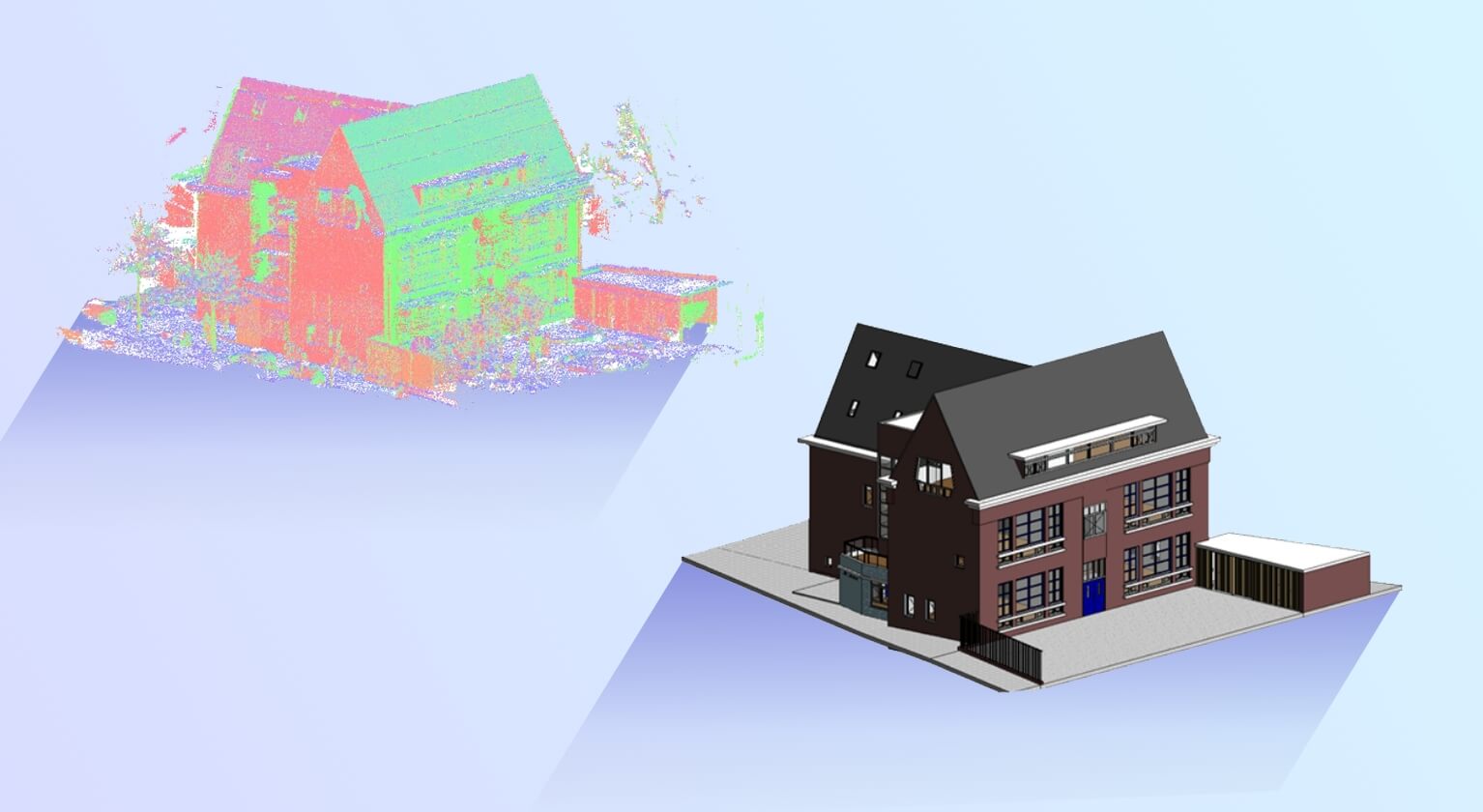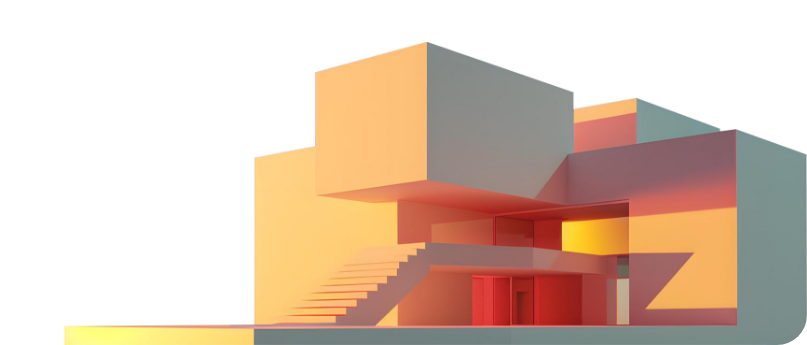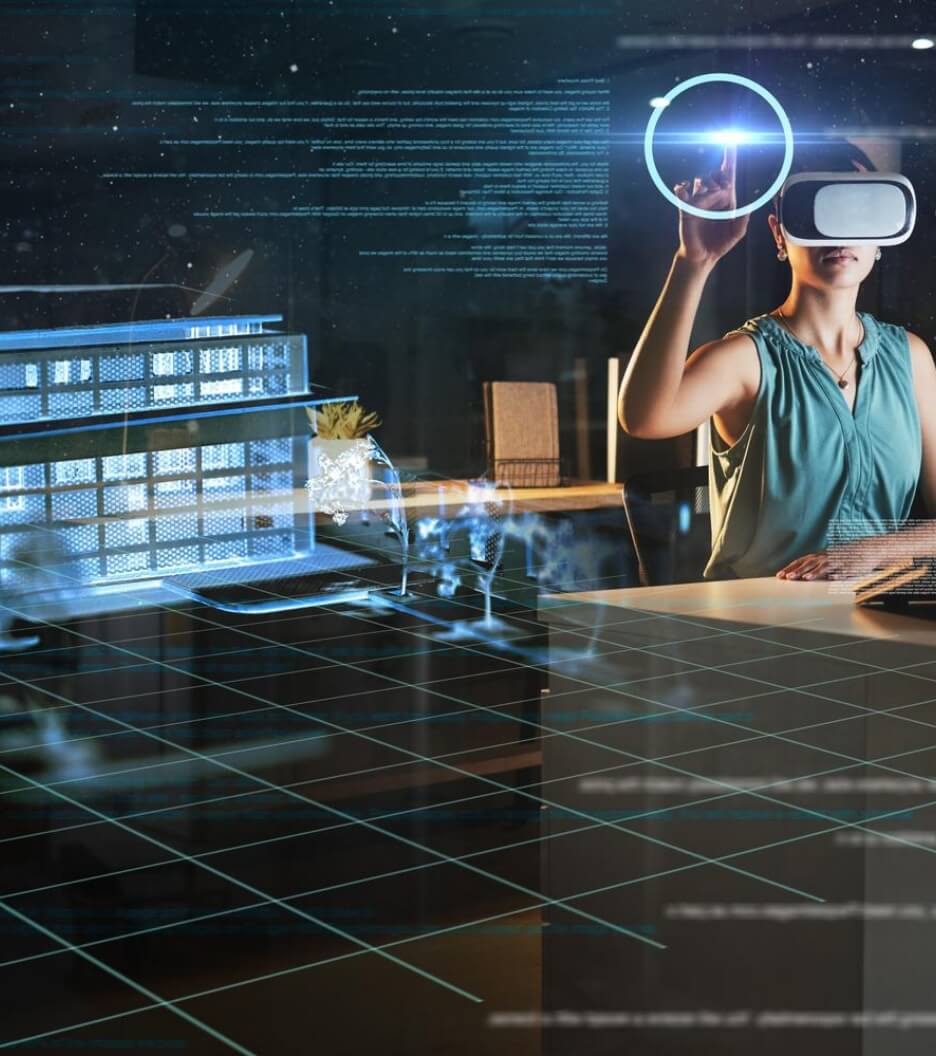 Rahul Dogra
Rahul DograFuture Horizons of Scan to BIM Technology
 Rahul Dogra
Rahul Dogra
Send Us Your Requirement
Innovations and technology enhancement are getting more advanced at a rapid pace. In the dynamic marketplace, staying ahead of the competition and adopting emerging trends and innovation is one aspect of thriving. Innovations emerge in every sector, giving a new perspective to the working approach. Similarly, innovations and technological advancements have eliminated traditional design, planning, and construction methods in the architecture and construction sector while giving architects and engineers a new learning and creativity curve.
It’s no fact that the construction sector is complex and time-consuming, where skills, accuracy, and efficiency are paramount to each project’s success. Besides, cutting-edge technology like BIM has become a robust tool in the modern architecture process to attain desirable outcomes. In the current era, where modernization is at its peak, architects and engineers continue to comprehend the changing dynamics of the market. As a matter of fact, in recent years, the AEC industry has witnessed various innovations that have resulted in a drastic shift in the working culture. One of the innovative waves came when building information modeling was introduced in the late 60s. However, it got popular in the late 70s. Today, BIM needs no introduction in the AEC realm as it has become necessary for every architecture firm for every project, regardless of its size and nature.
The revolution of BIM services in the AEC industry, which simplified many different complex aspects of construction, gradually advanced with rapid technological growth. One process-altering innovation in the AEC sector came into the spotlight was scan-to-BIM services. This technology holds immense potential to give architecture and construction a new horizon. Today, scan-to-BIM is not a buzzword but has become increasingly popular in the industry due to its many benefits, typically for renovation, refurbishment, restoration, or reconstruction.
Consistently Enhance Construction Projects with Scan to BIM
Talk to Us
The industry is familiar with the importance of scans to BIM technology and its imperative uses. The emergence of groundbreaking technology has transformed the renovation process for architects and engineers. In fact, the incorporation of scanned files into the BIM workflow has given marvelous end results without consuming much time and at a cost-effective approach. Although the sheer popularity of scans in BIM services is excellent, let’s briefly discuss them.
Scan to BIM Services- An Overview
Scan-to-BIM services have merged as a transformative technology for professionals and surveyors in the AEC sector. Most surveyors in the AEC industry outsource scans to BIM services, but certain aspects must be considered.
Checkout: 6 critical errors surveyors must avoid before outsourcing scan to BIM services
In the modern era, where the AEC industry is continuously evolving, scan to BIM, also known as point cloud to BIM, is a collection of data points that are equipped through laser scanners. Laser scanners scan the entire space, fetching accurate and relevant information about the pre-existing structure. Further, these points (data) are integrated into the BIM workflow, resulting in accurate 3D digital representation of the structure with relevant information such as materials used, dimensions, problems, or inaccuracies.
Therefore, the developed model provides accurate, detailed, and efficient measurements of the structure. In short, it is a process that allows us to examine the location and understand the lacking areas. Apart from that, scan-to-BIM services offer a variety of benefits, such as:
- Accuracy in projects
- Adaptability
- Enhanced workflow
- Cost Efficiency
- Streamlined Decision Making
- Improved Efficiency
- Preservation and Renovation
- Facility and Asset Management
The list of perks can go long. However, with growing technology, scan to BIM services’ future looks promising, with emerging service trends. Let’s look at some upcoming trends in 2024 for point cloud to BIM services.
Future of Scan to BIM Services with Emerging Trends
With ever-growing technology drastically shifting in the AEC industries, scan-to-BIM services are also getting advanced with the maturing of technology. Since the rise of many software and tools, the renovation or reconstruction process is becoming more efficient and accurate, aligning with the latest trends. Moreover, the future of transformative technology looks promising.
As a matter of fact, trends or innovation can seamlessly transform the method and enhance the working approach for architects, designers, engineers, surveyors, and other collaborators. Check out the emerging trends for the future of scan to BIM that hold more exciting possibilities in the construction industry.
Emerging Trends for the Future of Scan to BIM
Use of AI (Artificial Intelligence)
Real-Time Scanning & Monitoring
Better Visualization with VR (Virtual Reality)
- Use of AI (Artificial Intelligence):- AI has become rapidly popular in the growing technological world. AI algorithms incorporated in the working approach can enhance the analysis process by automatically extracting features and relevant information from point cloud data and generating BIM elements. This can make the process faster and streamlined.
- Real-Time Scanning & Monitoring:- It is one of the significant trends that can reshape the concept of scan to BIM. Future upgrades in laser scanning techniques will allow real-time data collection to integrate into 3D models. This enables continuous construction monitoring, reducing the scope of errors and validating the building’s performance more.
- Better Visualization with VR (Virtual Reality):- Virtual reality amalgamated with a scan-to-BIM model can provide high-quality experiences to stakeholders and clients with better clarity, understanding, and visualization of the project, resulting in enhanced collaboration and communication.
The future of scan to BIM is bright with the trends mentioned above. The prospect of the same can give a new approach and edge in the AEC industry, enhancing project quality in a less time-consuming process and achieving better results while staying within the budget line. Moreover, these trends can also affect the working culture of AEC professionals, enabling them to design, plan, and construct the project with utmost accuracy. UniquesCADD has completed extensive scan-to-BIM projects using the latest software, achieving the desired end goal. Recently, a project from the Netherlands that required renovation from a point cloud for a historic preschool was delivered efficiently.
Wrapping Up
Scan to BIM stands at the forefront of innovations in the AEC sector. As the architecture and construction industry continues to embrace new advancements and adopt new trends, the future landscape looks better and more enhanced than today’s outlook. Scan to BIM integrated with the above trends can offer a more seamless and collaborative approach to reconstructing commercial or residential property.






